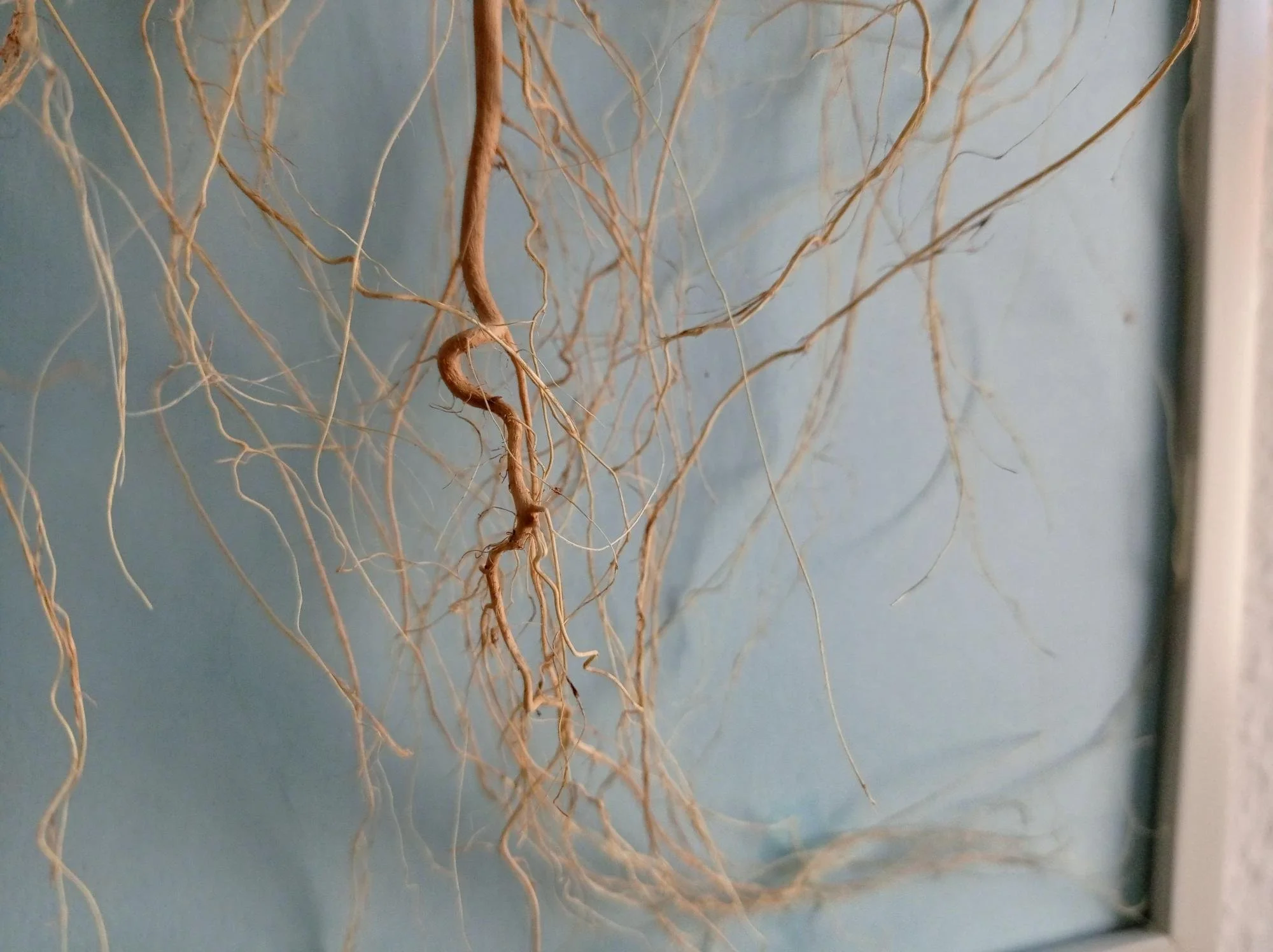The Science of Root Growth
Have you ever wondered what’s going on with your plants under the soil? Today we’re digging into it and getting down to the bottom of the (not so mysterious) mystery of roots.
Although it’s common to measure a plant’s growth by its leaves, it’s not the only factor we should be considering. The roots of a plant have serious work to do in terms of water absorption, communication, anchorage, support, and more. We asked Plantclub’s resident root expert Frank Papakonstaninou to dive into the basics of the science of root growth with us.
Types of roots
There are many types of root classifications but the most commonly found types can be sorted into three categories: taproot, fibrous, and adventitious.
A taproot system sprouts secondary roots from one strong main root (think carrots and beets), fibrous roots begin the same way as taproots but continue to grow from the stem tissue underground creating a bushier network (think grasses), while adventitious roots grow straight from the stem tissue (think aerial roots that sprout from monstera).
What do plant roots do?
The roots of a plant absorb water and nutrients, store nutrients, provide structural support for plants and surrounding soil, and can even serve the purpose of multiplication in some cases.
The roots of a plant absorb oxygen and soluble nutrients through water which is why it’s important to pay attention to how you home a plant and what kind of feeding and watering you’re doing.
“A plant absorbs water with nutrients from the roots, but it can't consume those immediately. That's why these nutrients travel to the leaves. That’s where the plant converts them into a usable form (like sugars and amino acids) with sunlight. These then travel back to the roots and through the rest of the plant to feed them,” summarized Frank.
How do roots grow?
Using hormones, roots send and receive important signals to and from the rest of the plant that determine whether or not to promote or halt growth.
For example, auxins and cytokinins are two types of hormones that are used for communication between the upper and lower parts of a plant. When the upper part is happy, it produces a lot of auxins which signal to the roots that things above are good so they can produce more roots. The cytokinins are the opposite and will signal to the branches that they have the support of the roots, meaning more branches can be produced.
Roots send and receive signals from the rest of the plant via hormones.
Common mistakes & remedies
Being equipped with this knowledge about how a plant works can be very helpful when it comes to listening to your plant’s needs. Here are just some of the ways your newfound background knowledge into plant roots can help you understand how to better care for your plant.
Roots need oxygen. Avoid using stale water to water your plants. Always use fresh, oxygenated water.
Roots and branches communicate with each other. A problem above may signal a problem below. Check on your roots and read more about how to plant and repot plants here.
Roots provide support and anchorage for plants. Be wary of loose soil, avoid toppling by providing support to your plant where needed.
Plantclub.io provides you and your colleagues with the benefits of plants, wherever you work. Rent office plants and transform your space into a green oasis, with flexible monthly membership options to suit your size. Diversify your employee perks with a dedicated company store, where you can give green gifts and your team can buy plants for their home office. Book a time to chat with us today.



